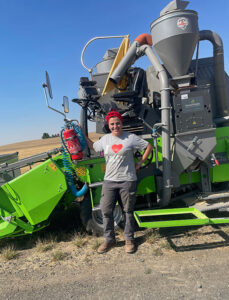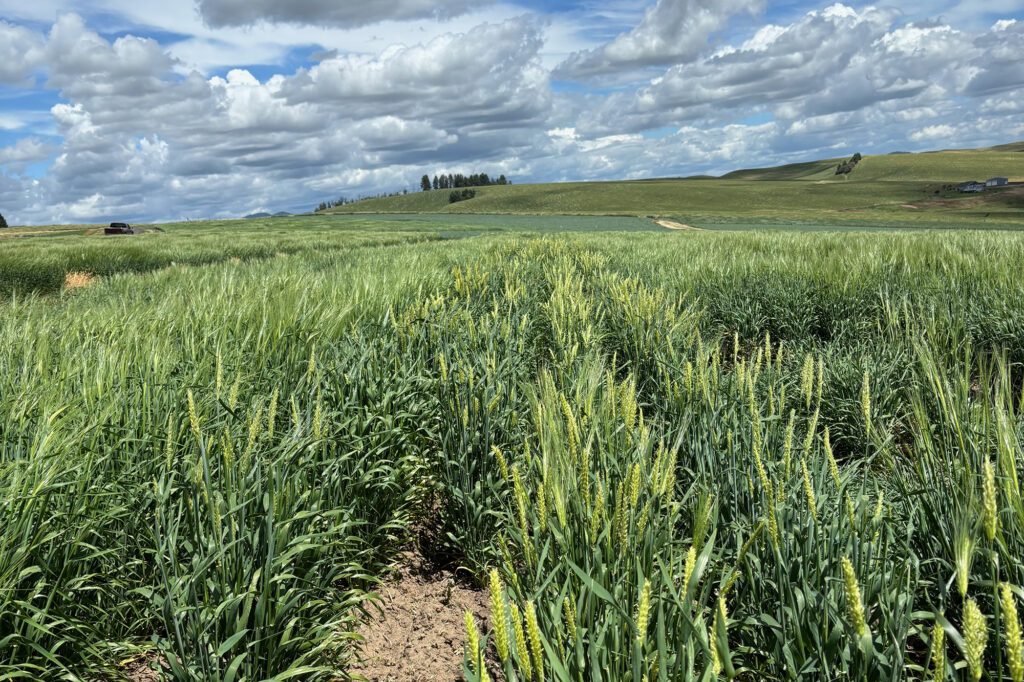Using genetics for added value of barley classes
By Bob Brueggeman
Barley has four main end uses, and all four classes — feed, malt, forage, and food — are grown in Washington. However, with the traditional market for Washington barley, feed is still the major class grown on dryland production acreage. This is not the trend across the U.S., as the major barley class produced is for malting. When determining the direction of the Washington State University (WSU) breeding program, particularly regarding the targeted barley classes, it is essential to consider market demands, farmers’ choices, and the rationale behind the decisions to grow barley. Obviously, the choice is determined by farmer profitability, whether by securing malt barley contracts that bring premium prices or planting feed barley considering the positive effect on the soil that may translate into yield increases of subsequent crops in rotation. Thus, short-term or longer-term profitability directs the choice to plant barley in the winter wheat rotation, which also directs my decisions in our breeding program.
My initial priority as the WSU barley breeder was to focus on malt barley, aligning with the national trend and demand for a sustainable supply of domestically produced malting barley. We made excellent genetic gains in the WSU barley breeding program over the last few years to enhance malt quality. In 2023, two experimental WSU spring malt barley lines received a satisfactory rating from the American Malting Barley Association pilot malt barley evaluation program, a first for the WSU barley breeding program. In the WSU variety testing program, one of these lines, designated 20WAM783.1, outperformed barley check variety AAC Connect in all rainfall zones and in the high rainfall zones in the University of Idaho testing program. I’m excited to say that our breeding pipeline is stacked with even better experimental lines in terms of quality and yield, so I’m expecting to release new WSU malt barley varieties in the near future.
Developing high yielding malt barley varieties with excellent quality will result in WSU malt barley varieties on more acreage, but they are probably not going to result in a significant increase of barley acreage in the state. Nationwide, the number one class of barley grown is for malt because the production regions of the upper Midwest and Intermountain States have a large market for malt barley, and the infrastructure is in place. However, acreage devoted to malt barley in the Pacific Northwest (PNW) is determined by the capacity of the limited regional malting plants, and these are running at or near capacity. Even though there is a need for more high-quality malt barley in other regions of the U.S. and other countries such as Mexico, malt barley export is difficult due to the lack of storage and transportation infrastructure in the PNW.
This led me to ask what can be done genetically to develop barley varieties with added value for farmers and end users to increase marketability and encourage more barley production. For spring malt barley, the added value is meeting quality parameters needed by the craft brewing and distilling industries with consistent high yield and broad adaptability through heat and drought resilience. This requires generating malt data across environments to determine the stability of malt parameters, especially those with a high genotype by environment interaction, such as protein and beta glucan levels, that greatly impact malt quality and brewing performance. We are accomplishing this through entering our lines into the Western Regional Spring Barley Nursery (WRSBN), coordinated by the U.S. Department of Agriculture’s Agricultural Research Service (USDA-ARS). The WRSBN is grown at 10 or more sites in the northern Great Plains, Intermountain States, and the Pacific Northwest. These regional nurseries provide a robust set of agronomic and malt quality data generated at the USDA-ARS Cereal Crops Research Unit in Madison, Wis. The WRSBN provides breeders with nurseries where experimental lines can be measured for performance across diverse environments to determine performance in head-to-head comparison with other programs’ lines and popular varieties.

High yield potential is required of all classes of barley, but there can be other added-value traits that would make their production more profitable or desired by industry. For example, winter malt barley has greater yield potential over spring malt barley under dryland production, where deficient late spring and early summer precipitation and high summer temperature can have negative effects on spring malt barley quality. Winter malt barley makes better use of stored soil moisture and ripens early in mid-June. By avoiding the summer heat during grain fill, major yield and quality advantages are possible compared to spring-sown malting barley. However, winter malt barley contracting only extends so far north and east in Washington due to the lack of cold tolerance or winter survivability of the current winter malting varieties. The genetics are present in the barley germplasm pool for much greater cold hardiness; thus, it is a major objective to introduce these genetics into our program as an added-value trait in winter barley to provide greater options for contracting of winter malt barley acreage farther into Washington state’s dryland growing regions.
The development of these winter hardy lines is of interest to Great,Western Malting in Vancouver, Wash. To this end, we are bringing in winter hardiness genetics and, in collaboration with Dr. Kim Campbell’s USDA-ARS wheat breeding program, can evaluate this material. Her group developed a method of screening winter wheat varieties in growth chambers, has modified the parameters for winter barley, and is evaluating winter hardiness in our winter barley breeding program. This research will help to identify lines with increased cold hardiness and, ultimately, winter survival under field conditions.
Although the breeding program resources will still proportionately favor the development of malt barley varieties, there is the need to continue effort to develop varieties in other barley classes, including feed, food, and forage. We are working on developing new beardless spring forage barley varieties, but as an anecdotal example, observation over years of growing winter malt barley showed that when we mow alleys in our winter malt barley yield trials, they grew back in these alleys quite prolifically, giving rise to new ideas such as the development of beardless winter forage varieties that have excellent seedling vigor for early weed suppression, high biomass, and forage quality, with the potential for two cuttings in a growing season. Development of such a variety may bring many added-value traits, including higher profitability for medium to low rainfall growing regions, such as the Highway 2 corridor, where winter hardiness would be important, and spring forage barley is currently being grown.
An important added-value trait that we are continuing to bring into spring feed barley is imidazolinone (IMI) herbicide tolerance, allowing for high yielding feed barley varieties that can follow IMI-resistant winter wheat without harm by residual herbicide. We are also exploring low phytic acid barley by introducing the single lpa1-1 gene into both our spring feed and food varieties. This trait provides more available micronutrients in the animal and human gut, which will result in more nutritional value in both the feed and food classes. It also results in less phosphorus in animal waste, which could provide our feed varieties with greater environmental sustainability.
As a geneticist and breeder, I have many ideas for how to increase added-value genetics into our barley varieties for greater profit and sustainability. However, is there a market for these varieties and can or will farmers incorporate these added-value barley varieties into their rotations? This is an open invitation for farmers, end users, and seed dealers to provide feedback on what your opinions are on the important attributes that may put more barley acreage on the map.

This article originally appeared in the October 2024 issue of Wheat Life Magazine.

Robert Brueggeman
Robert (Bob) Brueggeman, Ph.D., holds the Robert A. Nilan Endowed Chair in Barley Research and Education at Washington State University. His breeding program focuses on the development of high-quality spring and winter malting barley varieties that are widely adapted to diverse regions of Washington State.
